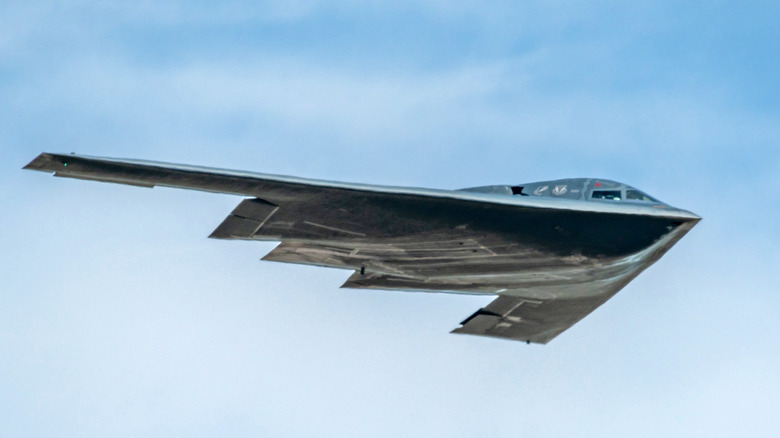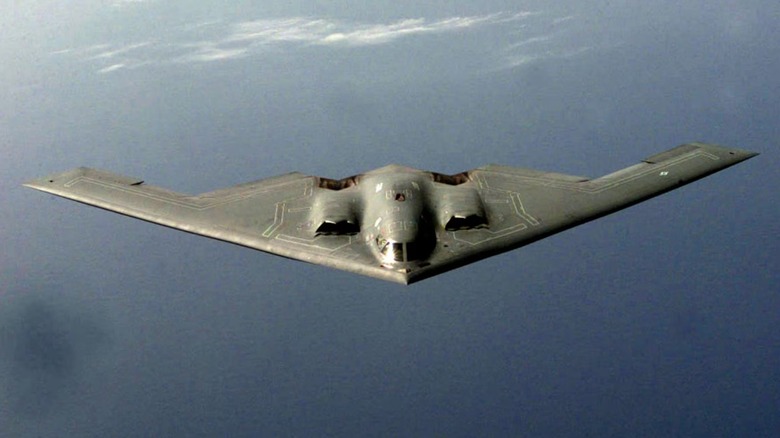How Long Can A B-2 Bomber Stay In Flight & At What Altitude Does One Fly?
When you think 'bomber,' what's the first plane that pops into your head? For most people, it's Northrop Grumman's B-2 Spirit, one of America's best stealth planes. That iconic flying wing shape is instantly recognizable, and its status is locked in because it has been the United States' go-to aircraft for some of its most crucial missions in recent history. One of the main reasons behind this is the B-2's unbelievable range. It can fly for about 6,000 nautical miles on a full tank, but that can be extended to a massive 10,000 nautical miles with a single aerial refueling.
But these are just figures from the brochure, the B-2's real claim comes from its combat missions. For instance, the all-time record for a single flight is a mind-blowing 44 hours and 20 minutes, set by pilots who flew one of the first strikes into Afghanistan after 9/11. Yet, even after that 44-hour flight, the plane didn't get to rest. It landed, got a quick service, and a new crew jumped in. Just 45 minutes later, it was airborne again for another 30-hour flight home. In total, that single bomber ran for over 70 hours straight without its engines shutting down.
As for how long the B-2 can really fly, the absolute limits are a mystery. As it stands, the real bottleneck isn't the fuel tank, but rather the sheer endurance of the pilots and the mechanical parts. Part of what makes these flights possible is where the B-2 flies. It has a combat altitude of 50,000 feet, giving it a huge strategic advantage. From up there, its range increases and its sensors get a bird's eye view of everything below.
A deadly legacy and a successor on the horizon
Endurance is one thing, but what truly makes the B-2 a legend is its deadly combination of features. It's the only plane in the world that brings together long-range flight, a massive payload, and true stealth in one package. That stealth capability is particularly unique. The B-2 is basically invisible to radar thanks to its unique flying-wing design, special composite materials, and a special coating that absorbs radar signals. But while the outside is all about stealth, a look inside the B-2 bomber's top-secret cockpit reveals a surprisingly spartan, two-person workspace.
The B-2 can also haul a 40,000-pound payload, enough to carry a mix of conventional or nuclear weapons. This combo is brutally effective. During its first combat outing over Serbia, B-2s flew less than 1% of the total missions but managed to eliminate 33% of the targets in just eight weeks. In a more recent example during the strike on Iran, the bombers delivered 30,000-pound GBU-57 "bunker busters". All these capabilities make it no surprise that a single B-2 costs around $2.12 billion.
That said, the B-2's time is slowly coming to an end. The fleet is already incredibly small, with only 20 jets in service. These planes are also getting on in years, and maintenance is getting tricky. For instance, a fire during a landing in late 2022 grounded the entire fleet for months. The Air Force does say it'll keep the B-2s flying for another decade or so, but its replacement is already warming up. The brand-new B-21 Raider has already had its first test flight and is slated to take over soon.

